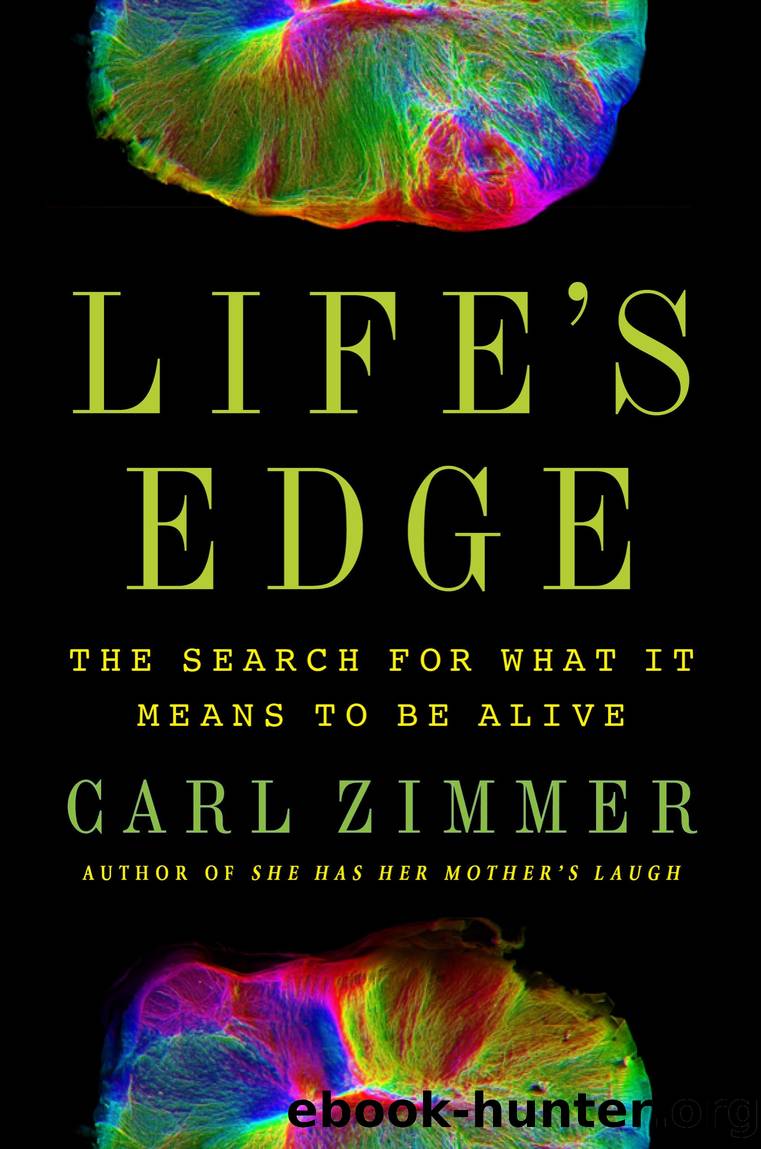Life's Edge by Carl Zimmer

Author:Carl Zimmer [Zimmer, Carl]
Language: eng
Format: epub
Publisher: Penguin Publishing Group
Published: 2021-03-09T00:00:00+00:00
* * *
â
Erwin Schrödinger was born in Vienna in 1887 and went on to become a physics professor in Zurich, where he developed an equation that would bear his name. The Schrödinger equation predicts how a systemâbe it a photon or an atom or a group of moleculesâchanges through time and space in a wavelike fashion. But Schrödingerâs name also became affixed to the most famous thought experiment involving a cat.
Schrödinger recognized the profound weirdness that his work and that of other quantum physicists implied. He offered a way to picture that weirdness: Think of a cat in a box. The box is rigged up with a device that can flood it with poison and kill the cat. Now imagine that the device can activate in response to a radioactive atom spontaneously decaying.
According to the leading interpretations of quantum physics in the 1930s, the atom could exist in a decayed state and an undecayed one at the same time. Only an observation would force its wavelike nature to collapse into one state or the other. If quantum physics was correct, Schrödinger argued, the cat had to be at once dead and alive. Only when an observer looked in the box did the cat receive just one fate.
To Schrödinger, life and death were more than just fodder for thought experiments. His father, a botanist, had introduced him as a boy to the complexities of plants. As a university student, he devoured biology books. Later, when Muller created mutations with X-rays, Schrödinger became intrigued by the nature of genes. He developed a laymanâs curiosity about âthe fundamental difference between living and dead matter,â as he once put it. When a friend passed Delbrückâs 1935 paper about genes to Schrödinger, it became the nucleus around which his own thoughts grew. At the time, Delbrück and Schrödinger were professional colleagues who traveled in Europeâs rarefied circles of quantum physicists. But Schrödinger never once spoke or wrote to Delbrück about the inspiration he provided.
Like Delbrück, Schrödinger sought refuge from the Nazis. Instead of California, he ended up in Ireland, where the government built him a research center to run. One of the requirements of the job was a series of public lectures at Trinity College. Schrödinger decided not to talk about his equations, since he would not be speaking to an audience of quantum physicists. Instead, he would deliver a course of lectures on his private thoughts about the nature of life.
A vast crowd descended on the lecture hall in February 1943. The organizers had to turn thousands away. When Schrödinger rose to speak, he warned the packed hall that he spoke not as an expert but as âa naive physicist.â And he had a naive question to askâthe same one that Georg Stahl had asked nearly 250 years earlier: What is life?
Much of the biology that Schrödinger described to his Dublin audience was not new. And much of what was new in his lectures would eventually prove to be wrong. And yet he managed to frame much of modern scienceâs approach to what it means to be alive.
Download
This site does not store any files on its server. We only index and link to content provided by other sites. Please contact the content providers to delete copyright contents if any and email us, we'll remove relevant links or contents immediately.
Sapiens: A Brief History of Humankind by Yuval Noah Harari(14160)
Sapiens by Yuval Noah Harari(5262)
Pale Blue Dot by Carl Sagan(4855)
Homo Deus: A Brief History of Tomorrow by Yuval Noah Harari(4773)
Livewired by David Eagleman(3619)
Origin Story: A Big History of Everything by David Christian(3589)
Brief Answers to the Big Questions by Stephen Hawking(3315)
Inferior by Angela Saini(3208)
Origin Story by David Christian(3115)
The Gene: An Intimate History by Siddhartha Mukherjee(3013)
Signature in the Cell: DNA and the Evidence for Intelligent Design by Stephen C. Meyer(2996)
The Evolution of Beauty by Richard O. Prum(2910)
Aliens by Jim Al-Khalili(2762)
How The Mind Works by Steven Pinker(2694)
A Short History of Nearly Everything by Bryson Bill(2575)
Sex at Dawn: The Prehistoric Origins of Modern Sexuality by Ryan Christopher(2439)
From Bacteria to Bach and Back by Daniel C. Dennett(2421)
Endless Forms Most Beautiful by Sean B. Carroll(2400)
Who We Are and How We Got Here by David Reich(2373)
